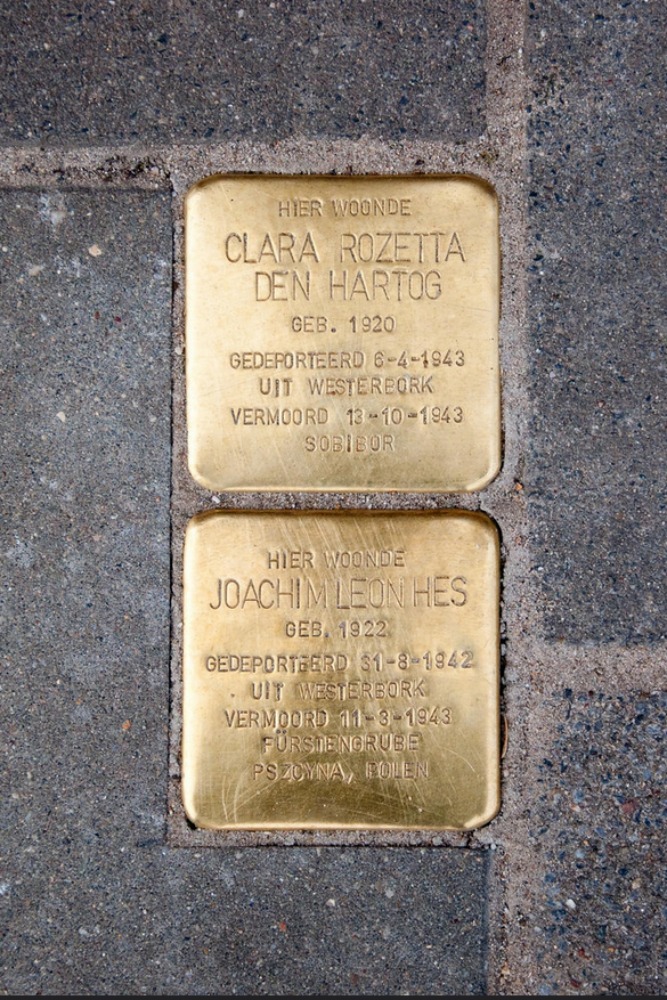Stumbling Stones Molenstraat 69
Stolpersteine / Stumbling Stones
for
* Clara Rozetta den Hartog, born 1920, deported 6 April 1943 from Westerbork, murdered 13 October 1943 Sobibor.
* Joachim Leon Hes, born 1922, deported 31 August 1942 from Westerbork, murdered 11 March 1943, Fürstengrube, Pszcyna, Poland.
Clara’s parents and her brother, who also lived at this address, survived the war.
Joachim (called Jopie in a school photo) was a tailor. He lived almost a year after being deported to Auschwitz. Fürstengrube coal mine near Auschwitz needed a place for laborers and Jewish slave laborers were forced to build a new camp to house Auschwitz prisoners who would then work in the mines. Fürstengrube (in Wesoła) was located about 32 km from Pszcyna (where 2 small tree-felling camps with several dozen men were in operation from autumn 1942 to spring 1943, when they closed). TracesofWar has not found an explanation for why "Pszcyna, Polen" was added to Joachim’s stolperstein.
"Stolpersteine" is an art project for Europe by Gunter Demnig to commemorate victims of National Socialism (Nazism). Stolpersteine (stumbling stones) are small brass plaques placed in the pavement in front of the last voluntary residence of (mostly Jewish) victims who were murdered by the Nazis. Each plaque is engraved with the victim’s name, date of birth and place (mostly a concentration camp) and date of death. By doing this, Gunter Demnig gives an individual memorial to each victim. One stone, one name, one person. He cites the Talmud: "A human being is forgotten only when his or her name is forgotten."
Borne was the first town in the Netherlands in which Stolpersteine were placed -- on 29 November 2007.
Do you have more information about this location? Inform us!
Source
- Text: Fedor de Vries & Anne Palmer
- Photos: Peter Mulder
- JoodsMonument.nl
- Auschwitz sub-camps
- Stolpersteine.eu
Nearby
Point of interest
Monument
- War Memorial Town Hall Oss - Oss
- Memorial Killed NS Employee - Oss
- Monument Titus Brandsma Oss - Oss
Cemetery
- Dutch War Grave Roman Catholic Cemetery Berghem - Berghem
- Commonwealth War Graves Roman Catholic Cemetery Heesch - Heesch
- Dutch War Grave Roman Catholic Cemetery Heesch - Heesch
Remembrance Stone
- Stumbling Stone Molenstraat 67 - Oss
- Stumbling Stones Molenstraat 78 - Oss
- Stumbling Stones Molenstraat 80 - Oss





